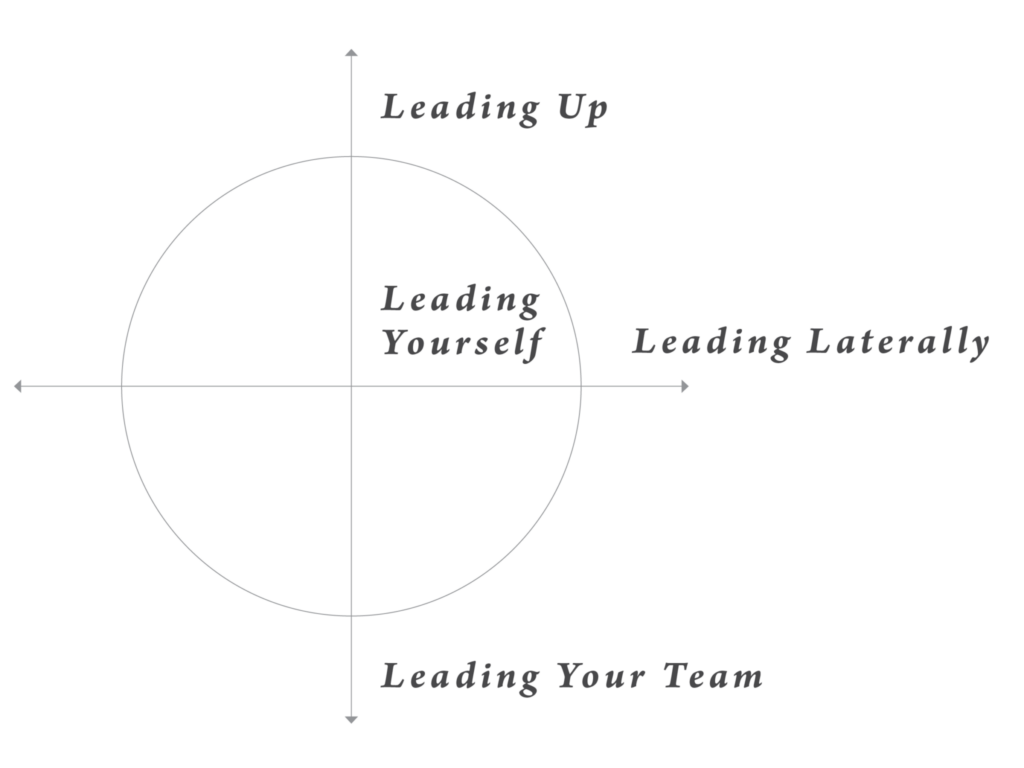When many people hear the word “leadership,” they think primarily about a leader leading his or her team. In reality, there are other important directions of leadership. Dee Hock’s instruction to leaders about leading more than their teams is the impetus of this framework.

What I Appreciate About This Framework
I love that the framework wisely helps leaders, including me, focus on different aspects of leadership other than simply leading a team. In fact, many times leadership failures are in realms other than leading one’s own team. You have likely seen people who are great at leading a team but horrible at leading themselves, and you knew that implosion was inevitable. Or you have seen leaders whose effectiveness was greatly limited because while they excelled with people who worked for them, they were a nightmare to people who worked alongside them. Perhaps you have seen a gifted leader lose the trust of his or her boss or the board and lose their leadership.
How to Use This Framework
I have commonly passed out a printed version of this framework and asked leaders to put the % of time they believe is allocated to each direction or dimension of leadership. “You have 100 points. Divide it up based on where you are spending your time.” Each time I have led this exercise, people have been surprised by how much time Dee Hock suggested leaders spend in leading themselves. He stated:
Here is the very heart and soul of the matter. If you look to lead, invest at least 40% of your time managing yourself—your ethics, character, principles, purpose, motivation, and conduct. Invest at least 30% managing those with authority over you, and 15% managing your peers.
The tool helps people understand the importance of the different directions of leadership.
How This Framework Has Helped Me
The framework has helped me develop a comprehensive mental model for different aspects of leadership. When I neglect any of these dimensions, and I have in the past, those dimensions tend to be lateral and upward leadership.
- Upward Leadership: John Kotter wrote an article years ago called “Managing the Boss,” and essentially said that one’s leadership effectiveness hinges on the relationship with one’s leader. He suggested focusing on communication and execution. Communicate to your leader(s) how they desire, when they desire, and in what format they desire. In terms of execution, he suggested making sure there was agreement on what the priorities are. As a young leader, I did not even think about leading up and focused only on the people I was investing in, but have since learned the foolishness of that posture.
- Lateral Leadership: While leading oneself is the most important direction of leadership, leading laterally is the most difficult direction of leadership. A leader leading laterally can’t lead with position, but must lead with vision, influence, and the weight of one’s credibility. Thus, people who are amazing lateral leaders can be trusted with more leadership. When I led in the marketplace, I looked for effective lateral leaders to promote.
Here is a PDF of the framework if you’d like to use it for your team.






